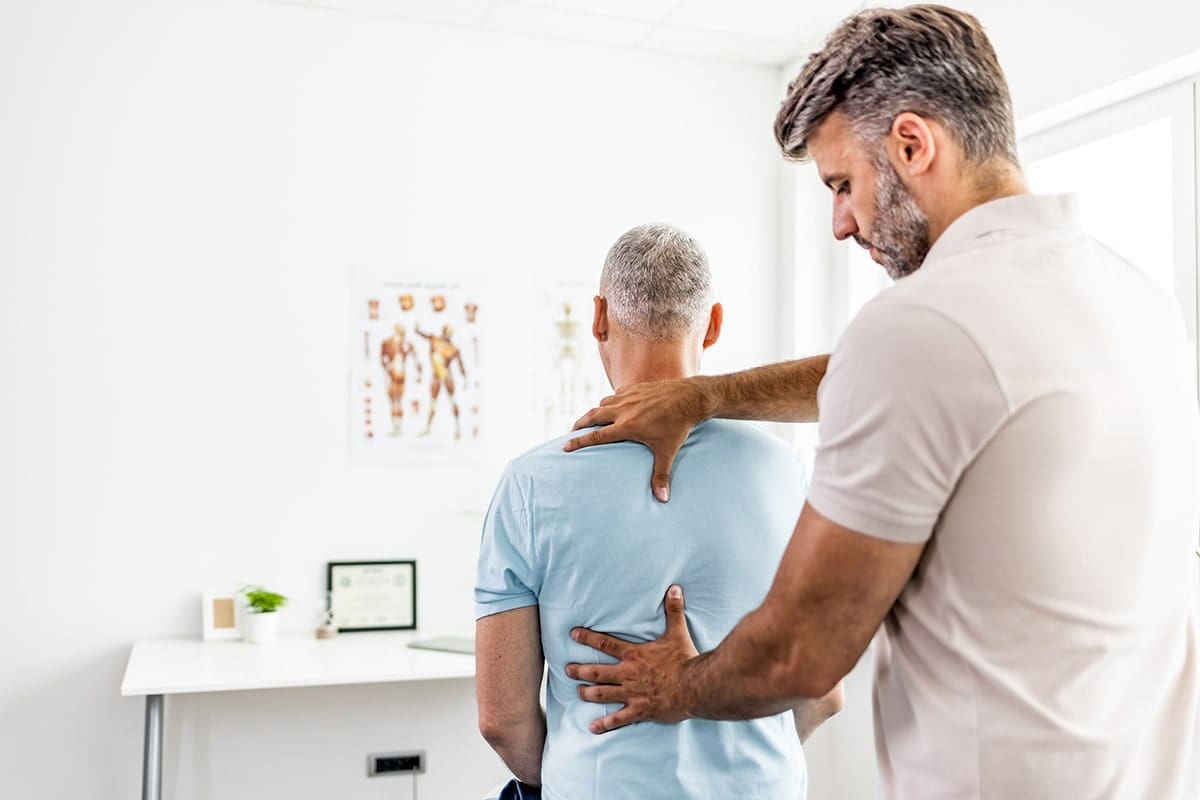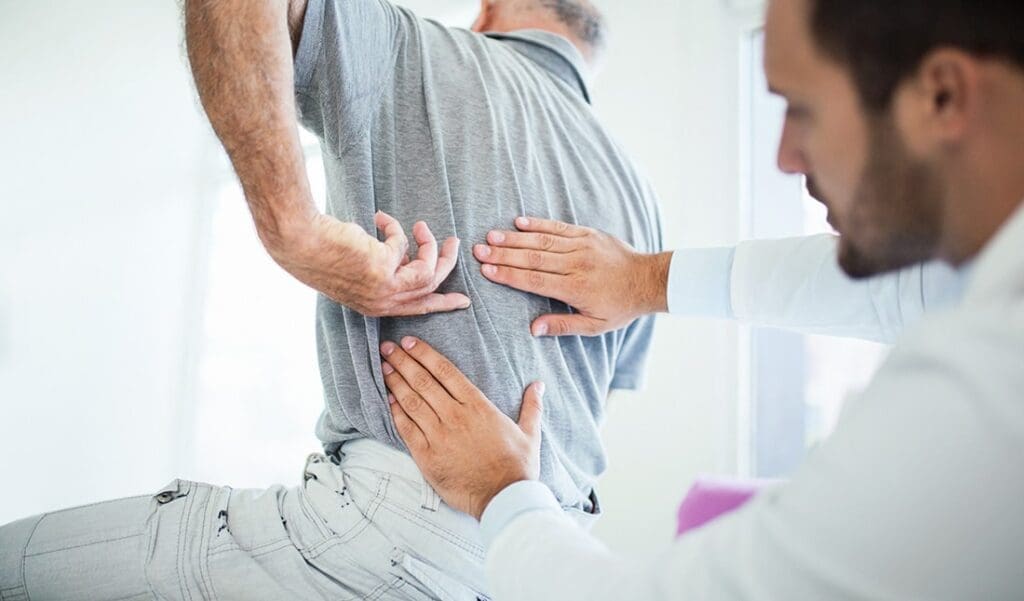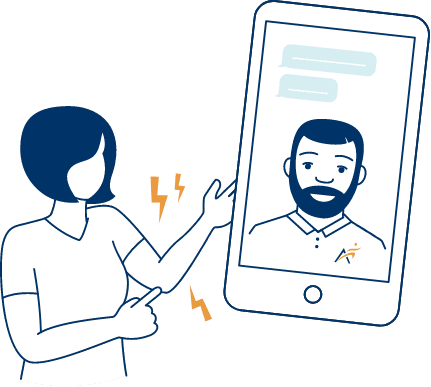- About
Who We Are
Partner With Airrosti
Testimonials
- Locations
Nationwide Care
Our virtual care option, Airrosti Remote Recovery is available nationwide.
Find A Location Nearest You
- Injuries We Treat
- No Cost Assessments
- Virtual Care
- Careers
Our virtual care option, Airrosti Remote Recovery is available nationwide.
(21,000+ reviews on Google across 150+ locations)

Have questions or would like to schedule over the phone? Call us at 844-719-5079
Find an Airrosti Clinic Near You (OH, TX, VA, WA)
We take the time needed for a thorough examination to find the underlying cause of your pain.
Airrosti Providers use hands-on manual therapy to treat upper back pain symptoms to reduce pain, increase mobility, and accelerate healing.
No surgery, injections, or prescription medication.
Patients have shorter recovery time with an average of 3.2 visits over 2 weeks.
Speed your recovery and keep your pain from returning.

Back pain can stem from several causes, such as an injury, health condition, or lifestyle factors, and develop into a chronic condition over time, lasting months or even years.
Chronic back pain can cause long-term restrictions in your overall mobility and quality of life.
Still have questions or concerns about your back pain? Schedule a no-cost video chat with one of our Providers.

Upper back pain can have several causes, and therefore, present itself differently case by case. Common causes include:
Often due to repetitive movements or overexertion of the muscles and is commonly seen in athletes.
Direct impacts from accidents or falls can damage the spine, bones, muscles, or ligaments in your back, potentially causing upper left back pain or upper right back pain.
Conditions like osteoarthritis or degenerative disc disease can gradually wear down spinal discs and joints, leading to pain or discomfort.
Slouching or hunching, common among desk workers and those with sedentary lifestyles, can strain the upper back. Moreover, standing with poor posture for extended periods can worsen these issues, and may lead to back pain when standing.
This condition occurs when the spaces within your spine narrow, putting pressure on the nerves that travel through the spine. It can result in pain, numbness, or muscle weakness in the upper back and extremities.
Other causes of upper back pain include Upper Cross Syndrome, a muscle imbalance leading to pain and muscle weakness, and scoliosis, an abnormal spinal curvature that can cause discomfort.
Symptoms of upper back pain depend on the type of injury or condition you may be experiencing.
Common symptoms of upper back pain include:
• Aching or throbbing pain
• Sharp or stabbing sensations
• Muscle tightness and tension
• Tingling or numbness that extends from your upper back to your shoulders and arms
• Pain that radiates down your back, possibly indicating a pinched nerve

Not unsimilar from upper back pain, middle back pain shares many common symptoms, including:
• Tightness or stiffness in the joints or muscles
• Muscle aches
• Sharp, aching pain
Pain in the middle of your back may share similar causes to upper or lower back pain, such as a muscle strain or sprain from poor form when working out or lifting objects, a direct injury from a fall or accident possibly, or a herniated disc. Other causes or factors can be poor posture, osteoarthritis, or aging.
You should always consult with a healthcare professional to determine the cause of back pain, regardless of its location.
Surgery is not always necessary for mid back pain. In many cases, conservative treatments such as rest, physical therapy, Airrosti care, medication, and lifestyle modifications can effectively manage symptoms and improve mid back function. Surgery may be considered if conservative treatments fail to provide relief, or if there is evidence of structural issues such as spinal instability or compression of nerves that require surgical intervention. It’s important to discuss all treatment options with a healthcare professional to determine the best course of action.
It’s generally safe to take medications for mid back pain, but it’s important to use them as directed by your healthcare provider. Over-the-counter pain relievers such as acetaminophen or nonsteroidal anti-inflammatory drugs (NSAIDs) can help reduce inflammation and alleviate discomfort. Prescription medications such as muscle relaxants or corticosteroids may be recommended for more severe cases of mid back pain. It’s important to consult with a healthcare professional before starting any new medication regimen, especially if you have underlying health conditions or are taking other medications.
Yes, there are several self-care techniques and exercises that can help alleviate mid back pain. These may include gentle stretching exercises to improve flexibility, strengthening exercises to support the spine and core muscles, and postural correction techniques to maintain proper alignment of the spine. Additionally, applying heat or ice to the affected area, using ergonomic furniture and workspace setups, and practicing stress-reduction techniques such as deep breathing or meditation can help alleviate muscle tension and discomfort.
While it’s important to avoid activities that exacerbate mid back pain, completely restricting all activity may not be necessary. Modifying activities to reduce strain on the mid back and incorporating rest breaks can help alleviate symptoms. Low-impact exercises such as walking, swimming, or yoga can be beneficial for maintaining mobility and promoting healing without putting excessive strain on the mid back. However, if mid back pain persists or worsens with activity, it’s important to consult with a healthcare professional for proper evaluation and guidance on activity modification.
My athletic department at Westwood HS has been using Dr. Morris for the last five years with great success. After an injury to my back, I decided to give them a try for myself. I went in to see her four times and felt a significant improvement. I was very pleased with my quick recovery and professional service with everyone at her office.
by Anthony Wood
We offer both in-clinic and telehealth appointments to best suit your needs.
Reviewed by Casey Crisp, Doctor of Chiropractic
Disclaimer: Always consult with your doctor before starting any exercise program. If you experience any numbness, tingling or reproduction of your symptoms, please contact your doctor.
